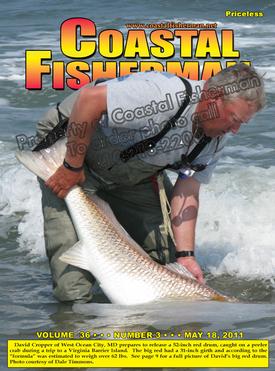


Article by Pat Schrawder
 AIS BECOMING MORE OF A STANDARD ITEM
AIS BECOMING MORE OF A STANDARD ITEM
Each year more and more boats are on the water and larger fuel capacities of smaller boats allow them the luxury of venturing further offshore. This however, puts them in the traffic lanes of other vessels, many of which are foreign and are not communicating by VHF with boats in their vicinity. This can present a “real and present danger”. But the development of AIS (Automatic Identification System) has a solution for this problem.
AIS has been developing over the years but has become something that is more accessible to the average boater. Since 911, the Federal Communications Commission has set standards for and has required that certain vessels be equipped with AIS to support Homeland Security. Simply put, AIS is a shipboard broadcast system operating in the VHF maritime band that provides “real time” detailed information between vessels and/or shore-based stations allowing you to identify and track certain vessels in the surrounding area providing collision avoidance data. In other words, who’s out there and where are they going? It requires a VHF AIS antenna, an AIS device (a "receive only" Class B unit or a "send and receive" Class A unit) and a GPS. The Class “B” unit allows you to receive detailed information about other Class “A” AIS-equipped vessels but will not allow other vessels to “see you”. The Class A device will allow you to both “see” other AIS equipped vessels and for AIS-equipped vessels to “see you”. Certain vessels are required to be equipped with Class “A” AIS transponders but the system as currently implemented only works for those that are equipped.
When an AIS system is installed on a vessel, several items of data are programmed into the unit to be transmitted via the system. Among those items are: ship’s name, type, call sign, IMO number, length and beam, antenna location, draft, cargo information and destination. The GPS interfaced with it will calculate and display the vessel’s ETA (estimated time of arrival). The incoming information from other vessels will be displayed in rotation on your AIS receiver, your radar screen if it is interfaced, or other screen. One way to picture this is to compare it to the screen of an air traffic controller. Periodically, the information is updated and, if the vessel is under way, your AIS system “tracks” its position, course over ground, speed over ground, gyro heading, rate of turn, navigational status and direction of travel. It will also check for dangerous targets within a safe zone set up by you, sounding an alarm. This system is installed in Coast Guard stations and aids them in implementing Homeland Security safeguards by increasing their awareness of vessels in the water and especially to those entering US ports. If you have ever monitored one of the AIS systems, you would be amazed to find out how many other boats are out there, how large they are and where they are heading. A “tail” on the target displayed on your display screen will indicate the direction the vessel is traveling. The effectiveness of this system is dependent on the increased usage of it by more and more boats.
The advantage of AIS is that the target will be located and identified regardless of whether or not it can be “seen”. For example, if you and another vessel are hidden from each other’s view either because you do not have radar or because there is significant land mass between the two of you, the VHF transmitted signal of AIS will still show your presence. AIS also gives you lots of information about the ships in your area that you may “see” with radar, but which will not have all that data set.
That usage is being helped by the introduction of more AIS products. Most are “stand alone” units that interface with other items on your boat. However, we are now starting to see AIS show up built into VHF radios. Standard Horizon and Garmin units are two brands that have done so. Personally, I really like the whole AIS concept, especially after having monitored one, but I like to see the targets displayed on the plotter and/or radar unit. The argument can be effectively made that putting your VHF and AIS in one unit runs the risk of losing all if your radio goes out. With more and more manufacturers coming out with their version of AIS, I would look carefully at several units to compare them before making any purchase.
If you have a computer, here is a great web site you can visit that actually monitors vessel traffic and displays it
on-line. Their site is: http://www.marinetraffic.com/ais/. Check it out. It will give you a very clear idea of what AIS offers to you, and will be interesting to view even if you never add AIS to your equipment package.
Pat and her husband, Larry are owners of L&L Marine Electronics in West Ocean City, MD.